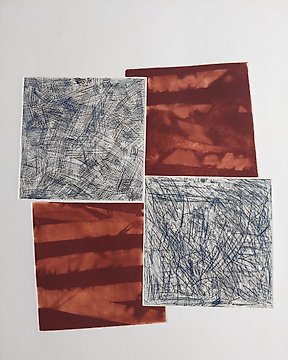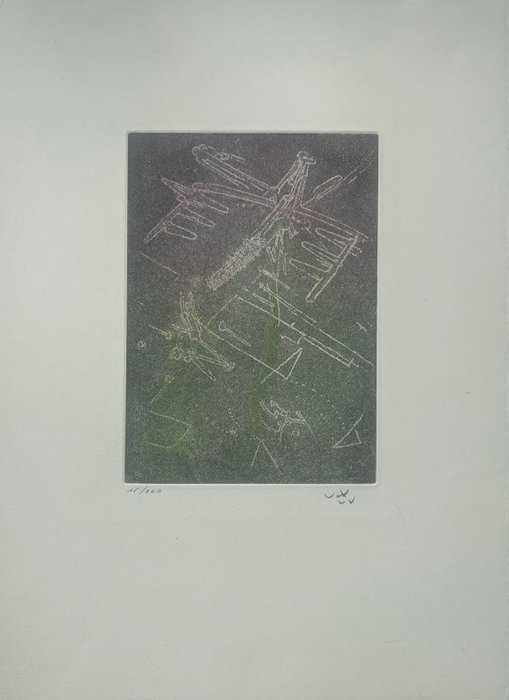
Stephen Buckley (1944) - Fields
Nr. 83353517

Nr. 83353517

Roberto MATTA (1911-2002)
Droites libérées, 1971
Médium : Eau-forte, signée et numérotée au crayon
Édition : 15/100
planche : 43 x 32 cm
Roberto Sebastián Antonio Matta Echaurren (November 11, 1911 – November 23, 2002), better known as Roberto Matta, was one of Chile's best-known painters and a seminal figure in 20th century abstract expressionist and surrealist art.
Born in Santiago, he initially studied architecture at the Pontificia Universidad Católica de Chile in Santiago, but became disillusioned with this occupation and left for Paris in 1933. His travels in Europe and the USA led him to meet artists such as Arshile Gorky, René Magritte, Salvador Dalí, André Breton, and Le Corbusier. Matta was of Spanish, Basque and French descent. It was Breton who provided the major spur to the Chilean's direction in art, encouraging his work and introducing him to the leading members of the Paris Surrealist movement. Matta produced illustrations and articles for Surrealist journals such as Minotaure. During this period he was introduced to the work of many prominent contemporary European artists, such as Pablo Picasso and Marcel Duchamp.
The first true flowering of Matta's own art came in 1938, when he moved from drawing to the oil painting for which he is best known. This period coincided with his emigration to the United States, where he lived until 1948. His early paintings, such as Invasion of the Night, give an indication of the work he would continue, with diffuse light patterns and bold lines on a featureless background. This is also the period of the "inscape" series, and the closely related "psychological morphologies". Prof. Claude Cernuschi (see Boston College Matta exhibition external link below) writes, "Matta's key ambition to represent and evoke the human psyche in visual form was filtered through the writings of Freud and the psychoanalytic view of the mind as a three-dimensional space: the 'inscape'." According to the essay on Matta in Crosscurrents of Modernism (see references below), the inscapes' evocative forms "are visual analogies for the artist's psyche" (p. 241). During the 1940s and 1950s, the disturbing state of world politics found reflection in Matta's work, with the canvases becoming busy with images of electrical machinery and distressed figures. The addition of clay to Matta's paintings in the early 1960s lent an added dimension to the distortions.
So kaufen Sie auf Catawiki
1. Etwas Besonderes entdecken
2. Höchstgebot abgeben
3. Sichere Zahlung durchführen